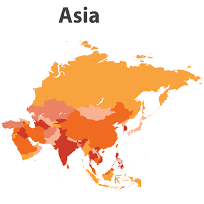Close Brothers Group plc (LON:CBG) today issued its scheduled pre-close trading update ahead of its 2021 financial year end. Close Brothers will release its results for the full year ended 31 July 2021 on 28 September 2021.
All statements in this release relate to the 11 months to 30 June 2021 unless otherwise indicated.
Adrian Sainsbury, Close Brothers Group Chief Executive Officer“We have navigated the changing environment well and our model has enabled us to perform strongly, making the most of opportunities, throughout the year. We are encouraged by improvements in the economic backdrop, although uncertainties persist. Face-to-face interaction with our customers and clients remains a key part of our model and we are looking forward to increased direct contact as restrictions gradually ease. However, the safety and wellbeing of our colleagues, customers and clients remain our highest priority.”
“I am confident that our proven and resilient model, together with the expertise of our people, leave us well placed to continue supporting our customers and clients and to protect, grow and sustain our business over the long term.”
Group and divisional performance
The group’s performance has been strong, with high levels of activity in Banking, good net inflows in Close Brothers Asset Management (“CBAM”) and strong trading income in Winterflood.
Our capital position remains strong, with a Common Equity Tier 1 (“CET1”) capital ratio of 15.9% (31 July 2020: 14.1%), significantly above the applicable minimum regulatory requirement1. In June 2021, we successfully raised £200m of subordinated debt in the form of Tier 2 notes, replacing and concurrently repurchasing most of the outstanding securities.
In Banking, the loan book increased 9.6% in the first 11 months of the financial year to £8.3 billion (30 April 2021: £8.2 billion; 31 July 2020: £7.6 billion). Since the Q3 trading update, we have continued to see significant business volumes, supported by the Coronavirus Business Interruption Loan Scheme (“CBILS”)2 in Asset Finance in particular, as we worked through our application pipeline following the closure of the scheme to new applications. New business volumes remained high in Motor Finance and utilisation levels continued to improve in Invoice Finance in line with the reopening of the economy. Although drawdown levels remained solid, the Property loan book has declined slightly reflecting continued high repayments.
The annualised net interest margin remained broadly stable on the 2020 financial year (FY 2020: 7.5%), as we maintained our pricing discipline.
Our focus on strict management of costs remains unchanged, while progressing our key strategic programmes.
The annualised bad debt ratio reduced slightly on the first half of the financial year (HY 2021: 1.3%), reflecting a stable credit performance of the loan book as a whole since the Q3 trading update.
The performance of the forborne book remains encouraging and the total balance of loans classified as forborne and subject to Covid-19 concessions continues to reduce, as progressively more customers resume repayments or are no longer considered forborne.
We remain confident in the quality of our lending, which is predominantly secured, prudently underwritten and diverse. Our impairment provisions continue to reflect the uncertain external environment, with the full impact of Covid-19 yet to be reflected in experienced credit performance. We continue to closely monitor the performance of the loan book as the macroeconomic outlook evolves and government support schemes come to an end3.
CBAM has continued its strong growth generating annualised net inflows of 7% (30 April 2021: 6%), despite the continued impact of reduced face-to-face interaction with clients arising from Covid-19. Including favourable market movements, managed assets increased to £15.3 billion (30 April 2021: £14.8 billion) and total client assets increased to £16.4 billion (30 April 2021: £16.0 billion). We remain committed to maintaining our excellent client service whilst investing in new hires and technology to support the long-term growth potential of the business.
Winterflood has benefited from the elevated market activity for most of the year and the expertise of our traders, although we have seen a moderation in trading volumes since the Q3 trading update. Average daily bargains stood at 103k in the first 11 months of the financial year (Q3 2021: 120k; FY 2020: 82k). Winterflood remains well positioned to continue trading profitably in a range of conditions, but due to the nature of the business, it remains sensitive to changes in the market environment.
Outlook
We have delivered a strong financial performance in the first 11 months of the financial year and remain well positioned to make the most of the opportunities arising from the current environment. Although the outlook has improved, the economic trajectory going forward remains uncertain. Our proven and resilient model and strong balance sheet, combined with our deep experience in navigating a wide range of economic conditions, leave us well placed to continue supporting our colleagues, customers and clients over the long term.
Footnotes
1 The group applies IFRS 9 regulatory transitional arrangements which allows banks to add back to their capital base a proportion of the IFRS 9 impairment charges during the transitional period. Our capital ratios are presented on a transitional basis after the application of these arrangements and the UK onshored provisions of the Capital Requirements Regulation (“CRR”) qualifying own funds arrangements. Without their application, the CET1 ratio would be 14.7%. In line with the amended CRR, effective on 23 December 2020, the CET1 capital ratio at 30 June 2021 includes a c.50bps benefit related to software assets which are exempt from the deduction requirement for intangible assets from CET1. The Prudential Regulation Authority (“PRA”) published PS17/21 ‘Implementation of Basel standards’ on 9 July 2021, confirming the reversal to the earlier position. This will result in the reversal of this benefit and reduction of the CET1 capital ratio upon implementation on 1 January 2022. The applicable minimum regulatory requirement, excluding any PRA buffer was 7.6% at 30 June 2021.
2 At 30 June 2021, lending under the Coronavirus Business Interruption Loan Scheme (CBILS) and associated schemes totalled £1,094 million across 5,570 loans, with the vast majority of lending via CBILS. Additionally, at 30 June 2021, £195 million across 886 CBILS loans in our Commercial and Property businesses had been credit approved and can be drawn down three months post approval date for term loans and six months for asset finance agreements. The UK Government support schemes for SMEs ended on 31 March 2021.
3 Expected credit losses reflect the application of macroeconomic scenarios, which have been updated to include more recent externally sourced scenarios on a monthly basis since the start of the pandemic. At 30 June 2021, weightings remained unchanged with 10% weighted to the upside scenario, 40% to the baseline scenario and 50% to downside scenarios. The modelled impact of macroeconomic scenarios and their respective weightings is overlaid with expert judgment in relation to stage allocation and coverage ratios at the individual portfolio level, incorporating our experience and knowledge of our customers, the sectors in which they operate, and the assets that we finance.









































